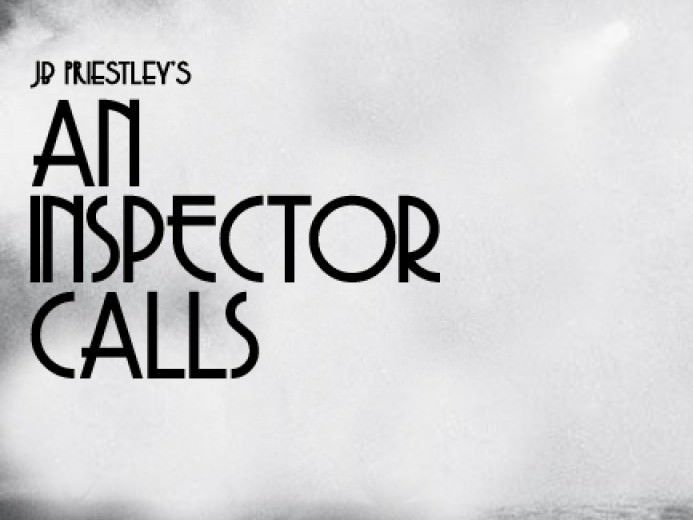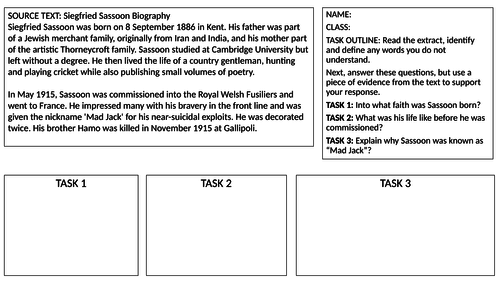
228Uploads
561k+Views
1394k+Downloads
All resources

KS3: Creative Writing (linked to A Midsummer Night's Dream)
After teaching content related to AMND, we had changed direction and ended up doing some creative writing. These lessons build on some top end creative skills.
Bundle

English Language Paper 1 and Paper 2 Bundle (version 2)
These two resources cover both papers in detail, and provide you with a spreadsheet to collate your data.

AQA English Language Introduction (Paper 1 Section A focus) with supporting Workbook.
A series of lessons and resources designed to introduce year 9 students to the wonders of the AQA English Language Exam. In these lessons, I deconstruct the Assessment Objectives in relation to each question on English Language Paper 1 Section A.
I use the old Sunlight on the Grass story “Anil” as the source text (strictly speaking, this falls outside of what the exam could focus on, but I figure in using these stories as I have all this knowledge about them that isn’t being used!).
06/06/19: I’ve updated this to include a workbook that mirrors the activities in the powerpoint. Just fed up of dishing out lined paper and/or exercise books that’ll only get used for a few weeks.

AQA English Language Paper 2 Revision Pack (London 2012 vs The Great Exhibition)
Two powerpoints (both alike in dignity…); the larger of the two covers the deconstruction of an English Language Paper 2 Section A mock exam - we go through common mistakes, areas of concern and identify how to improve on what we’ve done. I’ve provided the sources too, so you could use this as the basis of a Section A walking-talking mock; the smaller powerpoint covers speech writing, an area my lot particularly struggled with.
Happy hunting…

AQA English Literature Shakespeare: Romeo and Juliet
A series of lessons that can easily be expanded out to around 12-13 lessons that do the following:
Establish an understanding of the plot over 4 lessons
Gets the students to act out the plot via story whooshes (you will need a summary of the play to do this - I use a copy of the play with summaries of each page and get the kids to read certain key parts of the dialogue out loud)
Explore language and structure as methods
Build on the ability to analyse extracts
Develop a contextual understanding
Rather pleased with these to be honest. Hopefully you guys will feel the same too.
PS - I've chucked in a load more stuff too. Extract Analysis 3 was a lesson where I received "GOOD" for my observation. There is also a Creative Writing Lesson that may prove useful too.

AQA A-Level English Language and Literature: Othello - Lesson 1
A reintroduction lesson that should be taught with the understanding that the students have read the text beforehand. Designed as an entry point into year 13; ideal for new teachers looking to get the measure of a new class (as in my case).
I found this lesson particularly useful when combined with FAR marking the material surrounding the quotations.
You should view this as a starting point - future lessons will get much more specific.

AQA A-Level English Language and Literature: Othello - Lesson 2 (Soliloquies)
My second lesson. Here, I focus almost entirely on ACT 2 SCENE 1 and Iago's soliloquies therein. The notes element of the power point pulls a lot of thinking together from across a lot of sources - you'll need these notes to flesh out the tasks. I tie it up with an exam style question at the end focusing on what we can infer about attitudes to women. Quite pleased with how this looks and how it goes.
Bundle

Creative Writing Bundle
A whole mash of creative writing resources - some paid, some not - all in one place!

AQA English Literature Paper 2 Modern Texts: An Inspector Calls (Higher ability student focused)
A series of lessons that I taught to top set KS4 students. Please note, the gaps between the first and fourth lessons are intentional as I had the students act out the play and answer the comprehension questions in the AQA Study Guide book.
Bundle

AQA -Level English Language and Literature Othello Bundle
All my Othello lessons (so far). I will keep adding to this as I go.

AQA A-Level English Language and Literature: Othello - Lesson 4 (The Violence Within)
A thematic exploration of Violence within Othello - focusing specifically on Act 4. Also, the power point starts with a little revision of characters and quotations from across the play. I found this a fun lesson.

AQA Power and Conflict Poetry Scheme of Work
One power point per poem and some associated skills. I teach the poems in the order in which they appear in the anthology (except Tissue; I put that one at the end).
I follow a pattern with the lessons and source the contextual information from the BBC Bitesize website (and a couple of other places when I get bored of them) - it makes sense as any student that misses out on something can go and find what they need relatively quickly. The material is readily available elsewhere, hence the relatively low price for so many lessons.
NOTE: I have upgraded these lessons now. I’ve moved away from endorsing the PEEL style responses - the exam reports indicate clearly this is the thing to do. Additionally, I have included much more of a focus on the POWER themes. Lastly, I have used these poems as a springboard to discuss gender issues - part of this is my attempt to narrow the gender gap at the top end of GCSE English achievement by trying to get the lads to be more engaged with the material.
These lessons are designed to work in tandem with my own version of the poetry anthology. At the moment, I have yet to upload the edited version but I shall do so soon. That being said, the power points wouldn’t take much editing to use them with the traditional AQA version. All of the original lessons are included just in case you are still using the PEEL method of building a response.

A Level English Language and Literature: Paris Anthology
These resources assume prior knowledge on the part of the students - they will have covered the greater majority of the texts before hand.
The lessons go back and fill in the gaps. I try a few different things here in terms of approach. The "Mike and Sophia" extract guide is a guided annotation lesson; I'd be interested to see how classes respond to this.

AQA English Language Paper 1 Section A Mock Exam - Anil
I've found another use for all that knowledge we have about the old AQA English Lit anthology (The Sunlight on The Grass anthology). I have started to turn them into English Language Paper 1 Section A Mock Exams!
This is one of them. There is no mark scheme, but if you use the Paper 1 mark scheme from the AQA website you should be fine.
This one uses the start of Anil. As a pause for though, you may wish to consider renaming the character of Anil. Think about it...
Bundle

AQA English Language - The Complete Approach
A collection of all of my English Language resources. This also includes a spreadsheet for the tracking of the course.

AQA A-Level English Language and Literature: The Tollund Man
A lesson I put together to assist with the teaching of The Tollund Man. Pay attention to the notes element of the power point. I source a lot of information from a lot of different places here.
Also, the essay questions at the end tee up nicely into a lesson focusing on comparison.

KS3: SPaG Understanding a Text Lessons (Using Michael Grant's "Gone" series as a stimulus)
SPAG lessons can get a little flat at times. These are the worksheets I’ve designed to use with my own SPAG group. It is designed to be taught in tandem with a Dystopian Fiction SoW that ends with a reading assessment. Specifically, these lessons focus on an extract taken from Michael Grant’s “Gone” - all extracts taken from the first chapter. The aim is to develop an increased understanding of each text through the asking of more and more complex questions. The tasks can be sat as part of a lesson (I reckon they’ll take most groups between 10-30 minutes depending on the groups setting), or make ideal homework and/or extension tasks.
At the moment, the resources are set up to be taught to lower set year 7 students. But, it won’t be too hard to change the tasks to more suitable ones for any set.
UPDATE: I’ve included some versions that are more suited to be printed out. They have some basic RAG feedback grids on the back with some generic targets.

KS3: SPaG Understanding a Text Lessons (Focusing on WW1 poets and their background)
This uses a format I’ve used elsewhere. The lessons are designed to support the teaching of conflict poetry from WW1. The goal is that the students sharpen their reading skills and get a boost in their English lessons where the poet is the subject of focus.

AQA English Literature Poetry Knowledge Tracker Spreadsheet
A useful little tool. It allows you to RAGB(red, amber, green, blue) your students understanding/annotations of the 15 Power and Conflict poems in the AQA anthology. Also, it provides you with a poem by poem breakdown of your classes understanding/quality of annotations so you can see where the gaps are all the clearer.
The spreadsheet is set up for a class of up to 40, but the coding can easily be altered to allow for a whole year group.




















